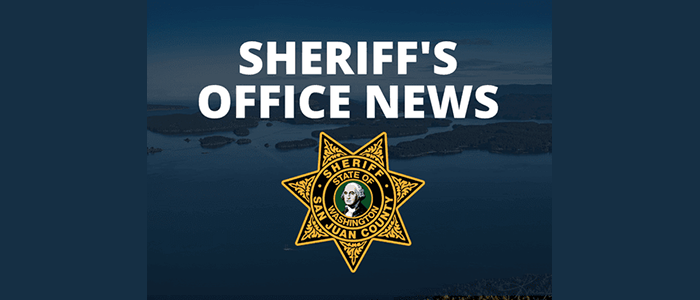— by Lin McNulty —
Whaddaya mean we don’t have a bomb squad? Whaddaya mean we don’t have a HazMat unit? Two recent incidents have brought this reality to light in our neighborhoods.
On Friday, April 10, a gas spill on Seaview Street on Orcas at 2:49 p.m. prompted a neighborhood evacuation of one-half mile until 9 p.m., when OIFR deemed it safe for people to return to their homes–with the caution of “no open flames.” Meanwhile Orcas Fire and Rescue continued to secure the scene until a HazMat unit arrived from National Recovery Corporation (NRC) at midnight on the late ferry to begin cleanup efforts. (Department of Ecology uses the services of NRC and pays for the initial response.)
Also, thanks to the involvement of legislators Rick Hughes and Kevin Ranker, the over-height HazMat unit was allowed on the ferries, “bumping” similar over-height vehicles with reservations.
On Sunday April 12, when a San Juan Islander found what he suspected might be explosives amidst guns and ammo in a garage, he placed them in his car and drove them to the Courthouse at 3:24 p.m. As a result, the Courthouse was immediately evacuated, with the exception of dispatch and the one prisoner on site. This decision not to evacuate everyone was made by the bomb squad itself, being familiar with the brick and steel construction at the Courthouse. A three-square block area was cordoned off and evacuated around the Courthouse and no traffic was allowed until the State Patrol bomb unit arrived on the 7:20 ferry from Marysville. The scene was cleared at 7:45 p.m. and the evacuation notice was lifted.
In both cases, the scenes were adequately secured and public safety not endangered, even though there was a wait for specially-trained units to arrive from off-island.
In spite of the professional, trustworthy, and dedicated volunteers and paid staff we have at our Fire Department, at our Sheriff’s Office, and our Department of Emergency Management, there are certain events for which we rely on outside assistance.
“Emergency planning,” says Department of Emergency Management Director Brendan Cowan, “is not event-specific.” This means there is no handbook on the shelf specifically for earthquakes, nor plane crashes, nor tsunamis, nor any other specific disaster that may strike our island.
“Rather,” he goes on to say, “the Emergency Management Plan is built on an organizational structure.”
When I first broached this topic with Cowan and then Fire Chief Kevin O’Brien back in September, Chief O’Brien also stressed there is no plan for a specific major disaster, no written plan for calling in local doctors should the need arise because of an incident involving multiple injuries or trauma.
While this seeming lack of plan may, on the surface, seem haphazard, the organizational structure allows for a case-by-case response. And just because it’s not a written policy does not mean we are necessarily abandoned out here in the middle of the Salish Sea.
For instance, if there were a major passenger airline crash in the San Juans, the Department of Emergency Management would call on better-qualified resources that could get here from off-island to assist. If we were to have a localized event, assistance would be brought in from neighboring agencies, e.g., Coast Guard, neighboring Fire Departments, and/or medical evacuation resources.
In the case of a region-wide earthquake, however, where every agency in Western Washington is involved in its own response, we would be on our own — meaning pushing the limits of our own local county emergency, fire dept, sheriff’s office, sewer district or other local resources.
We are confident that our local professional volunteers, including our local medical staffs, or own rubble-demolition removal operators would address the situation in their generous, responsive manner in an all-hands-on-board response to assist with whatever needs are critical.
This should not be considered a criticism of our services, merely acknowledgment of the reality that, because of our remote location, we simply have limits on the resources for responding to every disaster. We have mutual aid inter-agency agreements in place to help us. Orcas Islander Tim Fuller, former Police Chief and Fire Chief in Redmond, says that it is “common practice” for virtually every fire district, particularly in Washington, to have mutual aid agreements, if not actual contracts, with neighboring counties and cities. “No department can be considered to be the “yellow pages” for every situation.”
The County Comprehensive Emergency Plan is available ONLINE, and it is worthwhile taking a a look at it. If you would like to be advised of local emergencies, you can sign up for the Islands Emergency Alert System.
In addition, here are other sites that may be of interest, including third-party email lists that may be worth signing up for:
- The West Coast & Alaska Tsunami Warning Center issues email bulletins for North Pacific tsunami and seismic events.
- USGS Earthquake Notification List: Customizable email notification of earthquakes worldwide.







